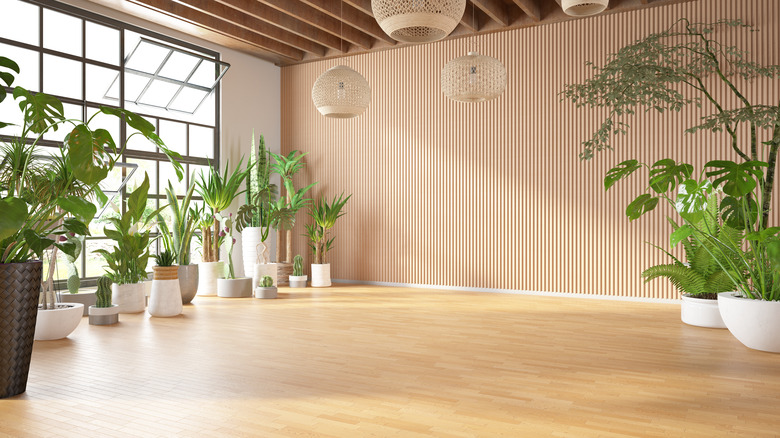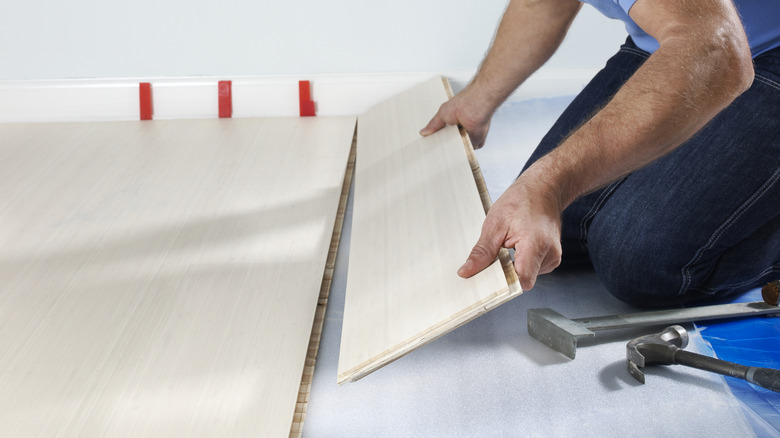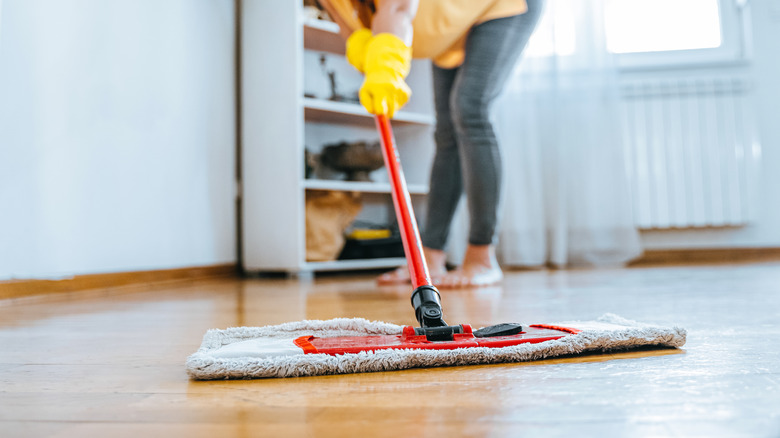How Long You Can Expect Bamboo Hardwood Flooring To Last Before Replacing It
Wooden flooring remains a popular choice among homeowners worldwide. It's prized for its timeless charm and natural warmth. The material's durability and versatility make it suitable for various interior styles, from rustic to modern, and as homeowners' environmental awareness grows, bamboo is emerging as a frontrunner in sustainable wooden flooring options. Its strength, rapid growth rate, and eco-friendly attributes have positioned it as a favored alternative to more traditional long-lasting hardwood flooring materials, satisfying both aesthetic and ecological concerns. The lifespan of bamboo flooring can vary depending on several factors — namely quality, installation, maintenance, and environmental conditions — but in general, good-quality, well-maintained bamboo flooring can last up to 25 years or even longer.
Bamboo, technically a grass rather than a wood, grows quickly, making it a more renewable resource than traditional hardwoods. Another key reason for bamboo's popularity is its remarkable strength. Pound for pound, bamboo surpasses the tensile strength of steel, making it incredibly resilient against heavy foot traffic and daily wear and tear. High-quality bamboo flooring that's properly installed and cared for can withstand regular use, maintaining its beauty and structural integrity for decades; however, homeowners should monitor it for signs of aging (such as scratches, warping, or discoloration) to ensure timely repairs or replacement.
Signs it's time to replace your bamboo flooring
Despite its durability, bamboo flooring, like any material, will eventually show signs of aging and wear. One common indication is visible scratches or dents on the surface. While bamboo (especially the strand-woven, un-carbonized type) is highly scratch-resistant compared to traditional hardwood, heavy furniture or sharp objects can still leave marks on a bamboo floor over time. Deep scratches, cracks, or tears not only detract from the floor's appearance but also create spaces where dirt and bacteria can gather.
Similar to other hardwood floors, bamboo flooring that produces excessive creaking or squeaking when trod upon can indicate that it's time for a replacement. Moreover, fading or discoloration can make the material appear tired and dated, particularly in areas exposed to direct sunlight. Two more telltale signs that you should repair (or replace) your bamboo floors are warping and buckling. These can occur due to fluctuations in humidity or moisture levels, causing the planks to expand and contract. As a result, gaps may form between them, or the flooring may become uneven. In extreme cases, water damage to your floors can lead to mold or mildew growth, compromising the floor's structural integrity. This is why identifying and resolving the problem's underlying cause is so crucial. Even something as simple as an aesthetic change in your home's design may warrant a flooring replacement.
How to care for your bamboo flooring
To maximize your bamboo floor's lifespan, perform regular maintenance and adhere to the manufacturer's recommendations. Start by regularly sweeping or vacuuming to remove dirt and debris that can cause scratches. If you use a vacuum cleaner, make sure it's made for use on wooden floors to prevent unforeseen damage. Next, wipe the floor with a microfiber mop that you've dampened with a mild, pH-neutral wood floor cleaning solution. Avoid leaving excess moisture that could seep into the bamboo and cause damage. Similarly, address any spills promptly and dry your floor's surface thoroughly after cleaning.
Use protective pads under furniture legs to prevent scratches and dents, and as much as possible, avoid walking on your bamboo floor in pointed or high-heeled shoes, as these can leave dents or scuff marks. Place mats or rugs in high-traffic areas to reduce wear, and consider using blinds, curtains, or other window treatments to minimize your floor's exposure to direct sunlight. Finally, monitor your home's humidity to prevent warping or buckling — ideally, you should keep indoor humidity levels between 30% and 60%. By following these simple care and maintenance tips, you can ensure that your bamboo flooring lasts for decades, retaining its beauty and functionality for years to come. If your flooring is already in poor condition, here are some tips for bringing old hardwood floors back to life.


